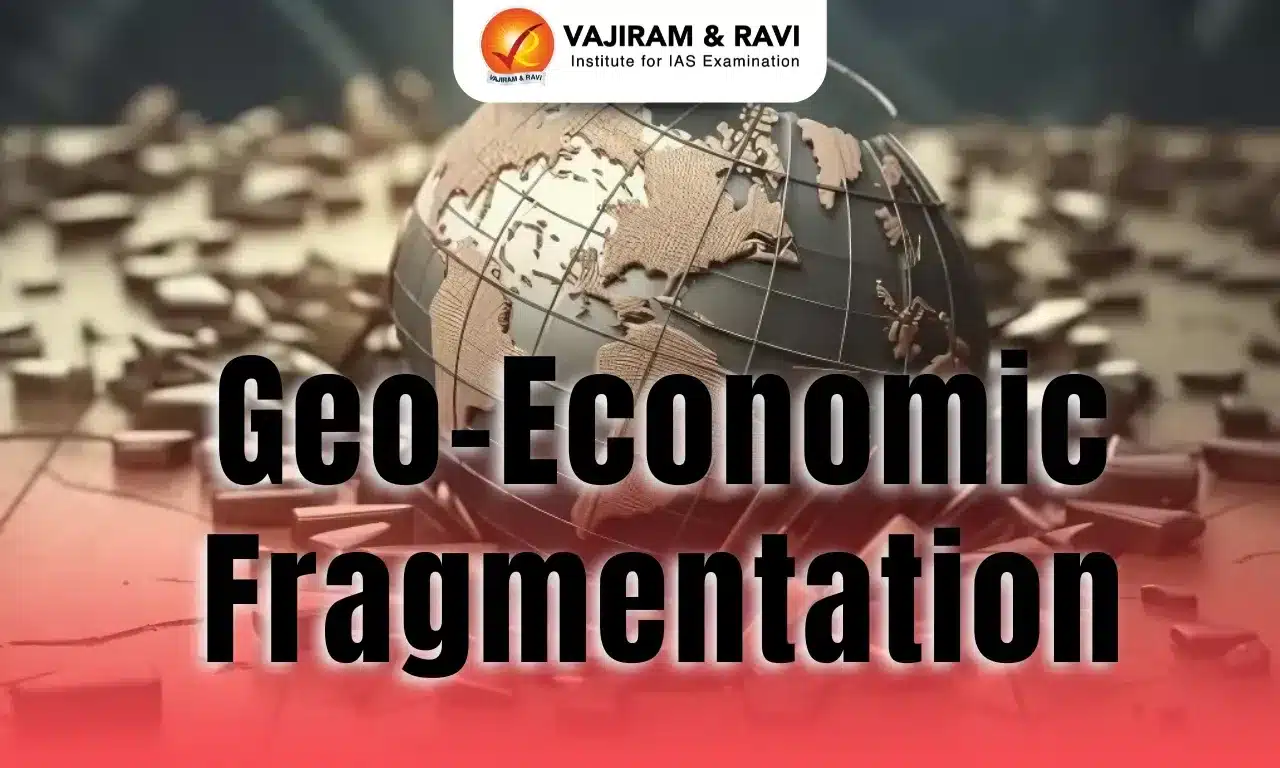Geo-Economic Fragmentation Latest News
The Economic Survey 2024-25 stated that global economic integration is backsliding, with geo-economic fragmentation replacing globalization, leading to a significant rise in trade restrictions.
About Geo-Economic Fragmentation
- ‘Geo-economic fragmentation’ can be defined as a policy-driven reversal of global economic integration often guided by strategic considerations.
- It is characterized by countries forming trade and financial partnerships based on geopolitical alignments.
- This process encompasses different channels, including trade, capital, and migration flows.
- This trend, marked by a retreat from multilateralism, has made geography less relevant than geopolitics in trade and investment decisions.
- Such fragmentation would result in permanent losses to global GDP.
- Based on IMF estimates, the costs of geoeconomic fragmentation can range from 0.2 percent to up to 7 percent of GDP in some economies.
- These losses can emanate from technological decoupling, trade restrictions, reduced capital movements owing to higher risk aversion, and a decline in international cooperation in the provision of global public goods among economies.
- Trade is the main channel through which fragmentation is reshaping the global economy.
- The impact of geo-economic fragmentation is seen in global FDI flows, which are increasingly concentrated among geopolitically aligned countries, particularly in strategic sectors.
Geo-Economic Fragmentation FAQs
Q1. What is meant by geo-economics?
Ans. Broadly, one can think of geoeconomics as the interplay of international economics, geopolitics and strategy.
Q2. What are the effects of economic fragmentation?
Ans. Fragmentation not only fuels inflation, but also negatively impacts economic growth prospects, particularly in emerging markets and developing economies that depend on an integrated financial system for their continued development.
Q3. What are the major barriers to global economic flows?
Ans. The major obstacles to international trade are natural barriers, tariff barriers, and nontariff barriers
Source: NIE
Last updated on December, 2025
→ Check out the latest UPSC Syllabus 2026 here.
→ Join Vajiram & Ravi’s Interview Guidance Programme for expert help to crack your final UPSC stage.
→ UPSC Mains Result 2025 is now out.
→ UPSC Notification 2026 is scheduled to be released on January 14, 2026.
→ UPSC Calendar 2026 is released on 15th May, 2025.
→ The UPSC Vacancy 2025 were released 1129, out of which 979 were for UPSC CSE and remaining 150 are for UPSC IFoS.
→ UPSC Prelims 2026 will be conducted on 24th May, 2026 & UPSC Mains 2026 will be conducted on 21st August 2026.
→ The UPSC Selection Process is of 3 stages-Prelims, Mains and Interview.
→ UPSC Result 2024 is released with latest UPSC Marksheet 2024. Check Now!
→ UPSC Prelims Result 2025 is out now for the CSE held on 25 May 2025.
→ UPSC Toppers List 2024 is released now. Shakti Dubey is UPSC AIR 1 2024 Topper.
→ UPSC Prelims Question Paper 2025 and Unofficial Prelims Answer Key 2025 are available now.
→ UPSC Mains Question Paper 2025 is out for Essay, GS 1, 2, 3 & GS 4.
→ UPSC Mains Indian Language Question Paper 2025 is now out.
→ UPSC Mains Optional Question Paper 2025 is now out.
→ Also check Best IAS Coaching in Delhi

















